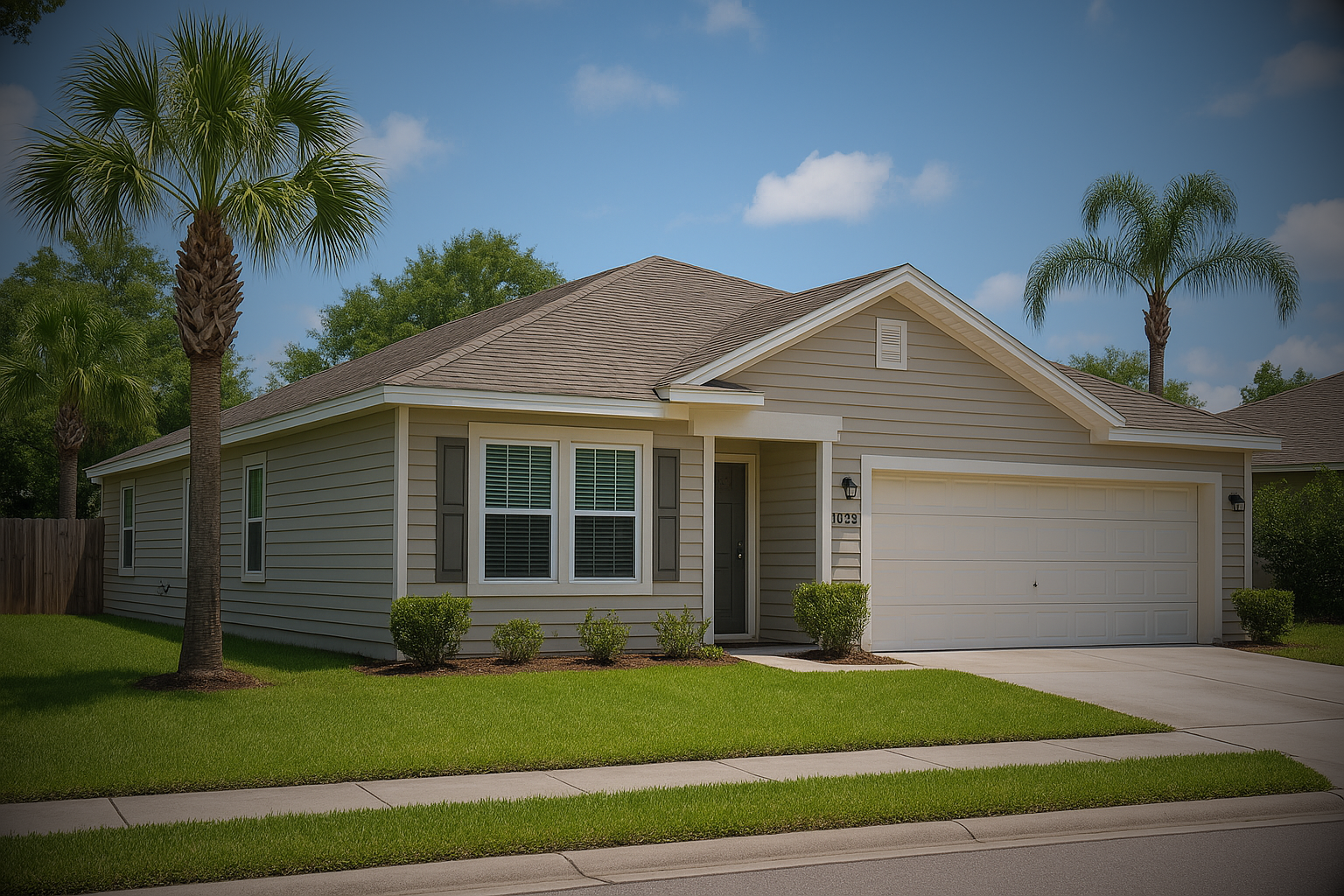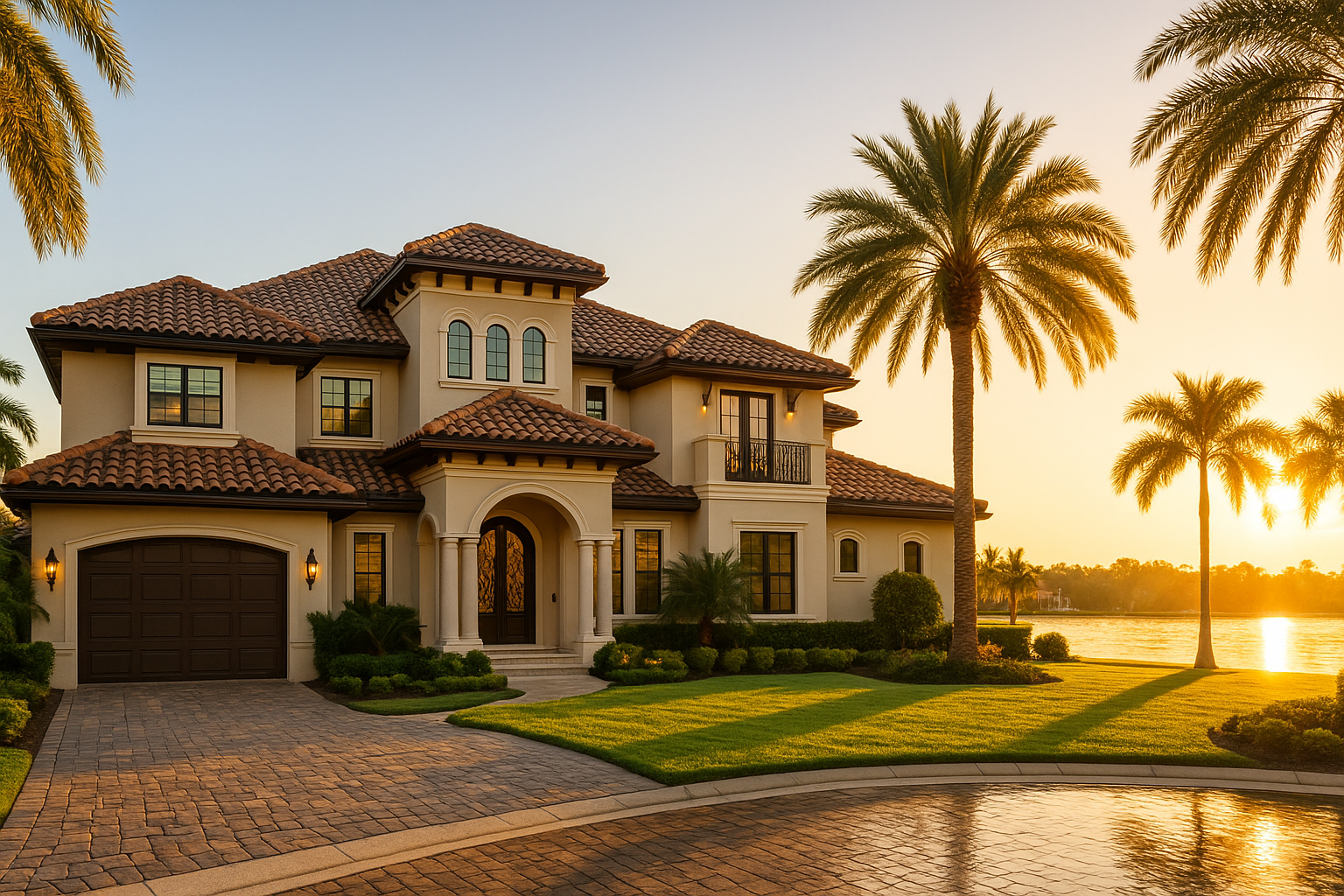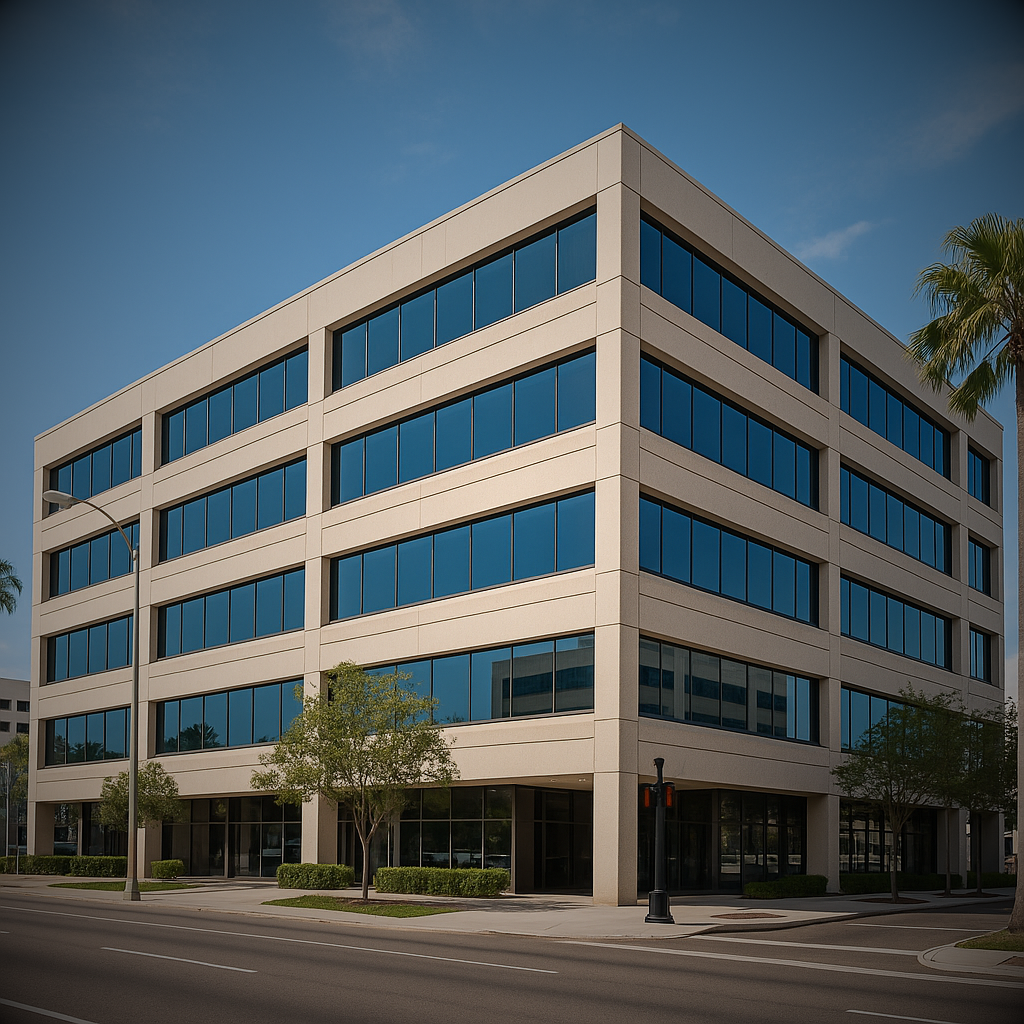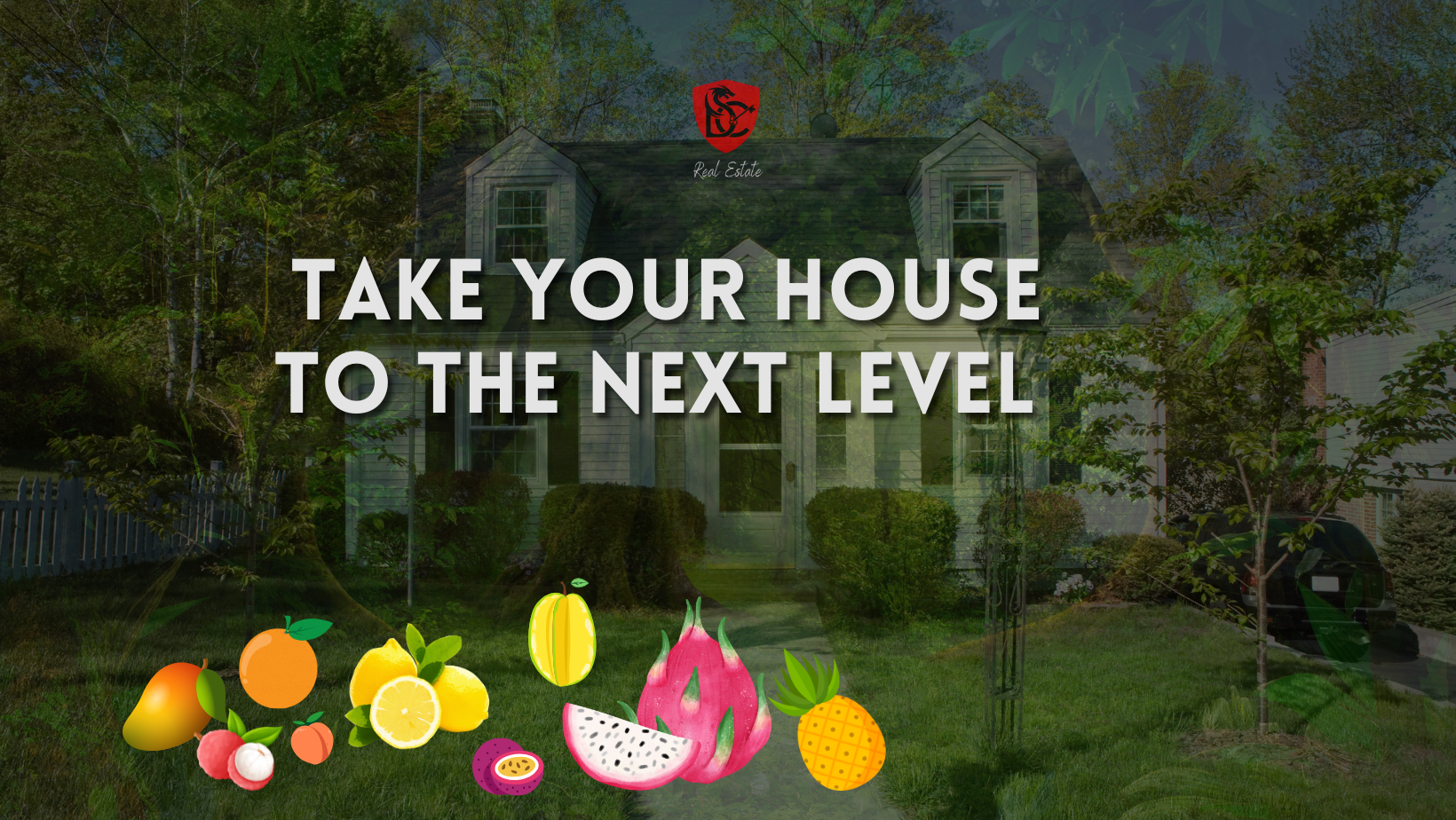~ 5 min read
The best time to plant a tree is 20 years ago.
If you’re selling a home or an investment property in Tampa Bay, you already know how important curb appeal is. But what if your landscaping could do more than just look good?Go beyond the basics. Don’t use the same commercially grown plants that Walmart uses in their parking lots.
It’s better to start working on your landscaping right when you buy, not only to enjoy the benefits yourself, but to give trees a chance to mature before it’s time to sell. Integrating agriculture, lush food forests, and strategic landscaping can transform Tampa Bay urban and suburban properties – not just visually, but financially. Homeowners and investors are increasingly discovering that edible landscaping isn’t just a gardening trend; it’s a smart real estate move. A well-designed yard brimming with fruit trees, herbs, and Florida-friendly edible plants can enhance curb appeal, boost buyer interest, and even improve property value or rental income. Below, we’ll explore the benefits from a seller’s and investor’s perspective, backed by data and case studies specific to Florida, and highlight examples of native and Florida-friendly edible landscape elements that thrive in our subtropical climate.
Edible Landscaping and Food Forests Add Value to Homes
First impressions matter in real estate. A thoughtfully planned edible garden or mini food forest can significantly improve curb appeal, making a home stand out on the block. Bright blooms from vegetable plants and the textured greens of herbs and fruit trees can add instant charm – “Anytime you are updating landscaping and yard finishes, you are adding value,” notes Miranda Cady, an Orlando Realtor. Unlike a plain lawn, an attractive edible landscape gives buyers something to remember. In fact, Realtors report that sustainable gardens often change the perception of a home, creating an emotional connection especially for those who value fresh food and eco-friendly living.
However, maintenance is key. As Cady cautions, a poorly-tended edible garden (weedy beds or overgrown vines) can turn into an eyesore just as quickly . The takeaway for sellers: present a well-maintained edible landscape to maximize appeal. When done right, edible landscaping merges beauty with utility – flowering peppers and eggplants provide ornamental color, a trellis of native passionfruit vine offers lush greenery and delicious fruit, and a backdrop of citrus or avocado trees adds stature and shade. All of this contributes to a unique curb appeal that photographs well for listings and entices buyers driving by.
Importantly, sustainable landscaping features also align with evolving buyer preferences. According to the National Association of Realtors, 92% of agents recommend boosting curb appeal before selling, and many buyers are more interested in homes with eco-friendly landscape touches. A recent Realtor magazine report noted that green landscaping offers multiple selling points, from reduced water bills to lower yard maintenance. In short, a front yard food forest can be both a conversation piece and a selling point, signaling that the property is forward-thinking and lovingly cared for.
Resale Value and ROI
Does edible landscaping translate into higher offers or faster sales? Several studies – including Florida-specific research – suggest yes. Attractive landscaping has long been known to boost home value. A multi-state survey in the Southeast found that going from a bare-bones lawn to a well-landscaped yard raised perceived home value by about 5% to 12%. Even upgrading an average landscape to an “excellent” one (with larger plants and a cohesive design) can increase a home’s value by 10% or more. For a $300,000 Tampa home, that could mean an extra $30,000+ in value attributable to great landscaping alone. The reason is simple – buyers see a finished, beautiful yard and are willing to pay a premium for that move-in ready outdoor space.
Florida case studies echo this trend. In one University of Florida experiment, sprucing up a formerly “ugly” yard led a home to sell 15 days faster after landscaping was added. Time is money for sellers, and two weeks off the market can save carrying costs and reduce stress. On the pricing side, the same UF study found homeowners often recoup much of their landscaping investment at sale. In the best case, a $4,700 landscaping project yielded an estimated $8,400 increase in selling price – a 76% return on investment. (Not every project hits such highs – another yielded only a 21% payback – but overall the evidence shows smart landscaping tends to pay for itself or better.)
It’s worth noting that edible or unconventional landscapes may require the right buyer to fully realize their value. A pioneering Tampa family that installed a complete urban homestead (with a chicken coop, 200 fruit trees, and scores of perennial vegetables) found it tricky to appraise, simply because “there’s nothing comparable” on the market. Traditional appraisers may not assign a dollar value to a permaculture food forest if local comps don’t have one. But from a marketability standpoint, that home became a local sensation – it drew tour groups and gardening enthusiasts from across Florida. The lesson for sellers is that while you might not get a formal line-item bump in an appraisal for your moringa trees and pollinator garden, you can still attract passionate buyers who appreciate these features (and in a bidding situation, that passion can translate to higher offers). In practice, a balanced approach works well: highlight the edible landscape as a bonus (fresh fruit! lower grocery bills!), but also emphasize the overall curb appeal and traditional positives of the yard to satisfy all buyers and appraisers.
Florida-Friendly Food Forests: Edible Landscaping Examples
One reason Tampa Bay is ideal for edible landscaping is our climate – the long growing season and rain cycles support a huge variety of topical edible plants. By selecting Florida-friendly and native species, homeowners can create landscapes that are beautiful, low-maintenance, and productive. Homeowners will certainly choose a differently than investors. Investors will tend to focus on less elaborate, hardier designs with a handful of fruit trees and bananas for example. Here are a few standout examples and ideas:
- Fruit Trees as Focal Points: Small to medium fruit trees can anchor a front or backyard design. In the Tampa area, options like mango, banana, avocado, papaya, or starfruit thrive and provide seasonal interest. There’s a hundred options as more and more types of previously obscure fruit trees are becoming well known and used such as: the strawberry fruit tree, tamarind, lychee, loquat or jaboticaba. A local edible landscaping designer might use a striking specimen like a jackfruit or citrus tree as a focal point in the design. These trees not only offer shade and lush foliage, but also the promise of an annual harvest that can entice buyers (imagine touring a home and seeing a mature mango tree laden with 50 fruit!).
- Edible Flowering Shrubs and Perennials: Many edible plants also have ornamental appeal. For example, cranberry hibiscus has beautiful red stems and calyxes that can be brewed into tea and taste exactly like cranberries. “Cape hibiscus” and other hibiscus varieties offer edible flowers and a tropical look. Blueberry bushes (Southern highbush varieties) can be tucked into garden beds for spring blossoms and summer berries. Native beautyberry is a Florida-friendly shrub that produces striking purple berries (edible in jams) and thrives in dappled shade. Mulberry trees (dwarf varieties) are another native edible that can work in home gardens – newer non-staining types won’t litter sidewalks. These plants blend in with traditional landscaping while providing fruit, nectar for pollinators, and year-round beauty.
- Herbs and Groundcovers: Culinary herbs often double as fragrant, hardy ornamentals. Rosemary can be used as an evergreen foundation plant or hedge; it’s drought-tolerant and provides endless seasoning for the kitchen. Society garlic offers lovely purple blooms and edible, garlicky leaves – perfect along borders. Similarly, lemongrass can replace ornamental grasses in a design, adding texture, citrus scent, and utility for teas and cooking. For groundcover, the native sunshine mimosa (Mimosa strigillosa) is a nitrogen-fixing creeper with pink powderpuff flowers that attract beneficial insects. While not edible itself, it supports the overall health of the food forest ecosystem. Groundcover sweet potatoes are edible and can be used in flower beds – they suppress weeds, thrive in Florida summers, and offer edible tubers and greens.
- Productive Vines and Trellises: To take advantage of vertical space (often important in small urban yards), homeowners can train edible vines on fences or trellises. Passionfruit (Passiflora) is a great choice in Tampa Bay – the native maypop variety has exotic flowers and yields tangy fruit, while also feeding butterflies. Muscadine grapes are another Florida native that can cover a pergola with attractive leaves and produce late-summer grapes for jams or wine. Even annual veggies like beans or cucumbers can be grown decoratively on an arbor in view of the street, demonstrating the yard’s abundance.
All these elements can be arranged with strategic layering, a technique borrowed from permaculture design. As GreenDreams landscape designer and Youtuber Pete Kanaris describes, a typical design might put the tall fruit tree in back, mid-sized flowering edibles in the midground, and low herbs and groundcovers in front. This mirrors conventional ornamental landscaping tiers, ensuring the edible garden looks lush and intentional, not wild. In fact, Kanaris notes that in some HOA communities, his team creates a “permaculture mullet – business in the front, party in the back”. That means the front yard might subtly include pretty edibles (an avocado tree that looks like a standard shade tree, or kale mingled with flowers), while the backyard hosts the more intensive vegetable beds or compost. This approach keeps the property visually appealing to all audiences while still delivering the full benefits of a home farm. And thanks to Florida’s 2019 law protecting vegetable gardens on residential properties, homeowners throughout the state (outside of strict HOA rules) have the legal green light to grow food in their front yards – a trend that’s gaining momentum as more people embrace self-sufficiency.
Investment Benefits
For real estate investors and landlords in Tampa Bay, edible landscaping can be an innovative way to increase rental appeal and even rental rates. The same features that draw owner-occupant buyers – beauty, sustainability, and low utility costs – also resonate with renters. Now investors shouldn’t do anything that a tenant would destroy from neglect in a year, but many fruit trees are surprisingly low maintenance. A recent survey found that 40% of renters consider green practices a critical factor in choosing a rental home. A property with a rain barrel, compost bin, or organic garden beds may signal to eco-conscious tenants that the landlord cares about sustainability, which can set your rental apart. In multifamily properties, community gardens and well-kept green spaces have been shown to boost tenant satisfaction and retention. Simply put, tenants enjoy having a pleasant outdoor area to relax or even grow their own veggies – it makes them more likely to renew their lease, reducing turnover costs for the owner.
An edible landscape can also be marketed as an amenity. Just as one might advertise a rental with a pool or upgraded kitchen, you can highlight fruit trees (“mango and avocado trees on-site!”) or a chef’s herb garden in the backyard as special features. Such amenities foster a sense of community and wellness – imagine a small apartment complex that offers a community herb garden or citrus grove for residents. According to industry insights, properties with unique outdoor amenities often justify higher rental rates, as renters are willing to pay a premium for quality-of-life improvements that align with their values. For short-term rental investors (Airbnb-style properties), a permaculture landscape can be a huge draw in listings – guests may specifically book a home that lets them pick fresh oranges for breakfast.
From a financial perspective, adding edible or sustainable landscaping is relatively low-cost with a potentially high ROI. Converting a plain lawn into garden beds, or planting a mix of fruit trees and native shrubs, is cheaper than many traditional home upgrades. One Florida installation company, Fleet Farming in Orlando, estimates a complete front-yard edible garden install (with irrigation) at around $2,000–$2,500 – often less than the cost of a new appliance. Unlike a depreciating asset, a garden can grow in value over time as plants mature and yield increases. There may even be local incentives: some Florida municipalities and utilities offer rebates for Florida-Friendly Landscaping or rainwater harvesting systems. While maintenance is needed, owners can choose hardy native edibles to minimize upkeep, or even incentivize tenants to care for the garden by sharing in the harvest. Well-designed edible landscapes also tend to be more resilient – diverse planting can mean fewer pest problems and healthier soil, which over time can reduce landscaping maintenance costs compared to water-hungry turfgrass.
Buyer Demand for Sustainable Features
The push for cleaner living is not a niche movement – it’s becoming mainstream, and Florida is no exception. Home buyer surveys show a growing preference for sustainable, eco-conscious features, especially among younger buyers. Nationally, four in ten Americans say access to green space influenced their home location choice. This reflects a desire for a healthier environment and could translate to higher desire for homes that provide green space – like a backyard food forest oasis in the middle of the city. Realtors in 2023 reported that more clients are asking about sustainability, from solar panels to organic gardens, indicating that having these features can broaden your pool of interested buyers.
In Florida and the Southeast, where gardening is feasible year-round, the interest in growing food at home has spiked. The National Gardening Association noted an 8% jump in food gardening households from 2019 to 2020, and by 2022 nearly 44% of U.S. households were growing some of their own food. This trend was accelerated by pandemic-era hobbies and a desire for food security. For sellers, this means a large segment of potential buyers will see a ready-made edible landscape as a major bonus – it’s an instant setup for a hobby they may already aspire to. Even those without a green thumb might find the idea of picking fresh oranges or herbs attractive if it’s presented as an easy, sustainable feature of the home.
Eco-conscious features can also be a marketing differentiator. A listing that mentions “sustainable Florida-Friendly yard with native pollinator plants and edible garden” will catch eyes in a sea of listings boasting only granite countertops. It tells a story about the home – that it’s not just another cookie-cutter property, but one that offers a healthier, more engaging lifestyle. Buyers increasingly seek homes that align with their values, and concern for the environment is high on that list. Simple additions like a composting area, rain garden, or even a small chicken coop (where allowed) can further signal self-sufficiency and low environmental impact. These features create a narrative that a real estate agent can leverage during showings: for instance, pointing out how native edible plants mean lower water bills and less fertilizer runoff – appealing to both the financially savvy and the environmentally conscious buyer.
On the rental side, millennial and Gen Z renters in particular are shown to value sustainability. Many are willing to pay a bit more in rent for energy-efficient appliances, solar power, or green amenities. A property with an edible landscape fits into that equation by demonstrating a commitment to a sustainable lifestyle. It can also foster community among renters, which is an increasingly sought-after aspect in rental communities. By catering to these preferences, landlords not only do good by the environment but also tap into a market of renters who are ready to reward those efforts with loyalty and higher demand.
Practical Tips
Adding agriculture into your landscaping can yield both tangible and intangible rewards when owning or selling a home in Tampa Bay. Here are a few practical insights to ensure these features actually enhance your property value:
- Design for Aesthetics First: To capture value, edible features should be as visually appealing as traditional landscaping. Use design principles like varying heights, colors, and textures. A mix of flowering edibles and evergreens can ensure the yard looks good in all seasons. As one study concluded, investing in professional landscape design (focusing on plant arrangement and size) optimizes the value added to your home.
- Go subtropical and Climate Zone-Friendly: Prioritize Florida-friendly plants that thrive in our climate with minimal care. Native edible species (like those mentioned earlier: persimmon, beautyberry, muscadine grape, etc.) or well-adapted fruit trees reduce the need for pesticides, fertilizers, and irrigation. This appeals to buyers who want a low-maintenance yard. It also means your landscaping will look healthier and tidier (boosting curb appeal) without constant coddling and pest removal.
- Highlight the Benefits in Listings: When marketing, explicitly mention the edible landscape perks. For sellers, that could be: “Spend less on groceries with an established organic vegetable garden and mature fruit trees right in your backyard,” or “Landscaped with water-saving native plants – green living with lower utility bills.” Back it up with any data you have (if your water bill is half the neighborhood average because of xeriscaping, that’s a compelling point to share). For rentals, a line like “enjoy gardening in your own yard and harvesting tropical fruits – a rare find in rental homes” can be a hook in advertisements.
- Ensure Accessibility and Education: Not every buyer or renter has gardening experience, so consider making it easy for them to take over the care. Simple steps include having an irrigation system on a timer for the garden, leaving behind a “guide” to the yard (identifying plants and their care/uses), or partnering with a local master gardener group that could be a resource. This can alleviate any concern that an edible garden is too much work, reinforcing it as a benefit, not a burden. Sellers have even been known to host workshops or “take a fruit tree” days for neighbors before moving – showing how integrated into the community and easy to love the garden is.
- Mind the Appraisal and Permits: While a bank appraisal might not explicitly add dollars for a food forest, you can still maximize your appraisal by maintaining general landscape quality – neat paths, healthy lawns or groundcovers, no visible patches of dead vegetation. Essentially, meet the expected standards (so the home isn’t marked down) and then enjoy the upside of buyers valuing the extras. Also ensure any structures like sheds, rainwater tanks, or chicken coops comply with local codes or HOA rules. In Tampa Bay, most edible plants won’t need permission, but if you’re in a community association, double-check their landscaping guidelines. Often, edibles can be integrated subtly to meet rules – for example, replacing a row of decorative shrubs with blueberry bushes still looks formal but yields fruit.
By following these practices, you make it easy for the next owner or tenant to say “yes”. You’re not just selling a house; you’re selling a lifestyle.
In the Tampa Bay real estate market, where year-round sunshine and outdoor living are part of the culture, adding edible landscaping and food forests is an innovative way to raise a property’s appeal. For sellers, it can mean a unique listing that commands attention, potentially higher offers, and faster sales by standing out in a crowded market. For investors, it’s a path to higher ROI, through value-added improvements and attracting quality tenants willing to pay for a greener living experience. And nature does all the hard work for you year after year. Beyond the numbers, these features create a narrative and sense of place – a home with a story that buyers can instantly connect with. As more Floridians embrace gardening, local food, and sustainability, a backyard food forest or edible front yard isn’t just quirky curb appeal; it’s a valuable asset. When done thoughtfully, growing your curb appeal literally (with fruits, veggies, and native plants) can yield ripe rewards in home value, all while contributing to a more beautiful and sustainable Tampa Bay community.





